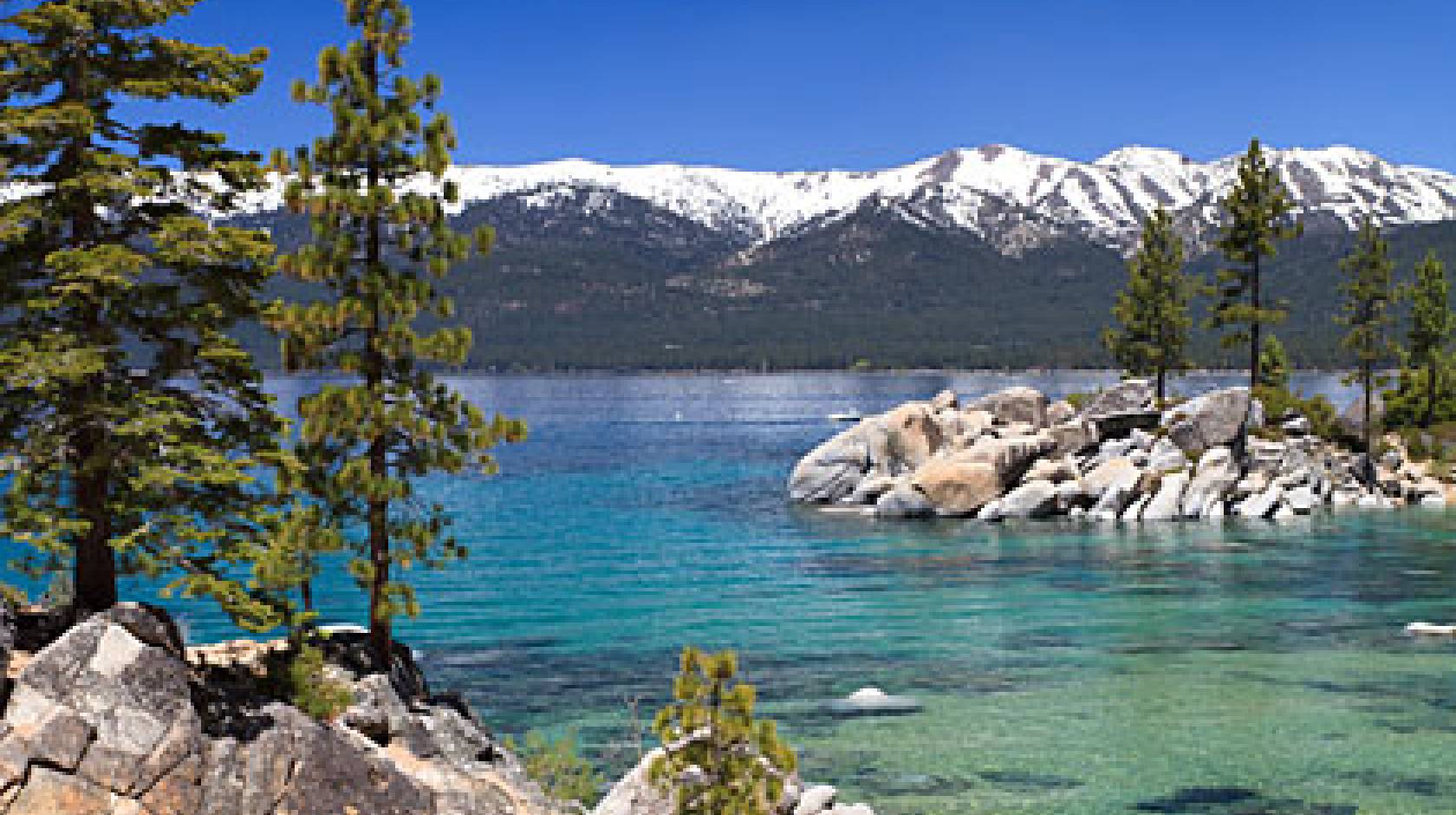Kat Kerlin, UC Davis

Despite an extreme weather year, overall clarity at Lake Tahoe improved in 2011. Yet underlying trends portray a more complex picture of the Lake Tahoe ecosystem, according to the annual “Tahoe: State of the Lake Report 2012,” released today by the Tahoe Environmental Research Center at the University of California, Davis.
The data reveal how natural forces and human actions have affected the lake’s clarity, physics, chemistry and biology since 1968, when UC Davis first began continuous monitoring of Lake Tahoe.
While the clarity of Lake Tahoe’s famed blue waters has long been the most visible and widely used indication of the lake’s health, a range of environmental and water quality factors is at play. Included in the report are data related to clarity, algae, invasive species, and the effects of climate change on precipitation, lake temperature and density stratification.
In several ways, 2011 was an unusual year for Lake Tahoe, the report says. Weather was extreme: The 2010-11 winter was one of the coldest and wettest on record. More precipitation than usual came down as snow, and the spring snowmelt came relatively late. Despite the cold winter and a cool July, the annual average surface water temperatures rose by 0.6 F.
”This last year has defied conventional wisdom in many ways,” said Geoffrey Schladow, director of the UC Davis Tahoe Environmental Research Center. “In the past, very wet years have led to decreases in lake clarity, whereas we are now seeing the opposite. This only reinforces the fact that the underlying, driving forces are themselves starting to change.”
Stability, defined as the energy needed for mixing layers of lake water, was calculated for the first time this year.
Researchers found that, during the past 43 years, the length of time a summerlike stratification — where layers of water form with different temperatures — persists has increased by almost 20 days, a likely outcome of climate change, according to the report. Researchers fear that if this trend continues, oxygen replenishment to the bottom of the lake will become less frequent.
Meanwhile, annual average lake clarity significantly improved over 2010, increasing by 4.5 feet. (Clarity data for 2011 was released in February 2012 and repeated in this report.) Year-to-year fluctuations are normal, which is why TERC researchers note that long-term trends are a better indication of lake health.
The 2011 winter clarity level of 84.9 feet was in keeping with a decade-long trend of actual improvement. The report speculates that the improved winter clarity of 11.9 feet over 2010 may be due to recent efforts to reduce urban stormwater flows to the lake, though researchers emphasize the need for a monitoring program to substantiate that idea. Meanwhile, summer clarity of 51.5 feet in 2011 was the second worst on record.
A potential culprit to reduced summer clarity is a microscopic algae cell called Cyclotella. The tiny cells have grown exponentially in the past five years, scattering light and reducing clarity. Research shows that times of the highest concentrations of Cyclotella coincide with the lowest summer clarity levels.
Clarity is measured by the depth at which a 10-inch, white Secchi disk remains visible when lowered beneath the water’s surface. The measurements have been taken since 1968, when the Secchi disk could be seen down to 102.4 feet.
Newly included this year is a summary of recent, ongoing research:
- The study said that the 2007 Angora Fire, which burned 3,100 acres, or 9 percent of the Upper Truckee River drainage, has had almost no effect on lake water quality.
- An experiment using rubber mats on a half-acre site in the southeast portion of Lake Tahoe to control the spread of Asian clams appears to be effective. In June 2010, researchers placed mats over Asian clam infestations to smother them. When the barriers were removed four months later, more than 98 percent of the clams had been killed. A year later, clam density was still reduced by more than 90 percent, the report said. The technique is currently being modified to control Asian clams in Emerald Bay.
- Researchers also observed the effects of pathogens, insects and mortality on forest health and found that trees in the upper montane (dominated by red fir and western white pine) elevations experienced the highest levels of mortality. The lowest levels of tree death were in subalpine forests. The most common forms of forest pests are bark beetles and dwarf mistletoes. The exotic and invasive pathogen Cronartium ribicola, which causes white pine blister rust, also threatens forest health.
The annual State of the Lake report informs non-scientists about the most important factors affecting lake health and helps influence decisions about ecosystem restoration and management within the Lake Tahoe Basin.
”Lake Tahoe can serve as an example to many other places in the nation,” Schladow said. “Science is being used to guide management of this precious resource, to inform honest debate on the restoration challenges, and to quantify the impact of the investments that have been made to date.”
The 2012 State of the Lake was funded by UC Davis, and the California Tahoe Conservancy.

